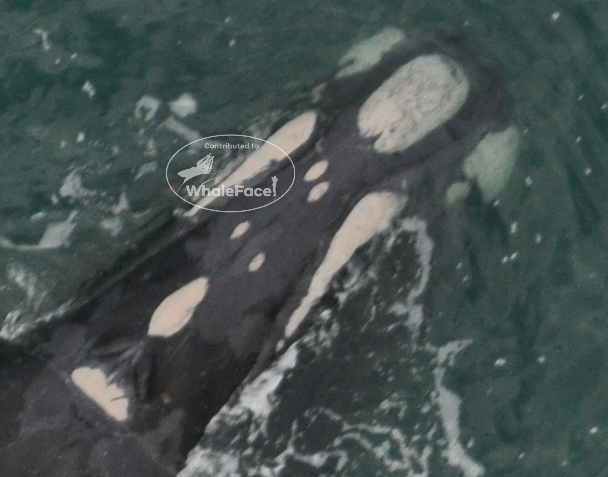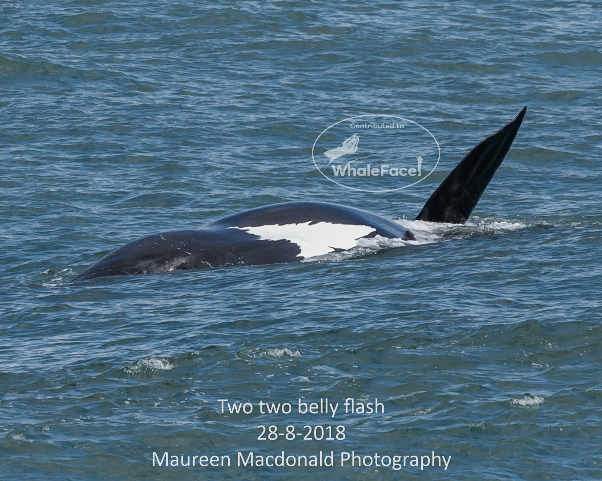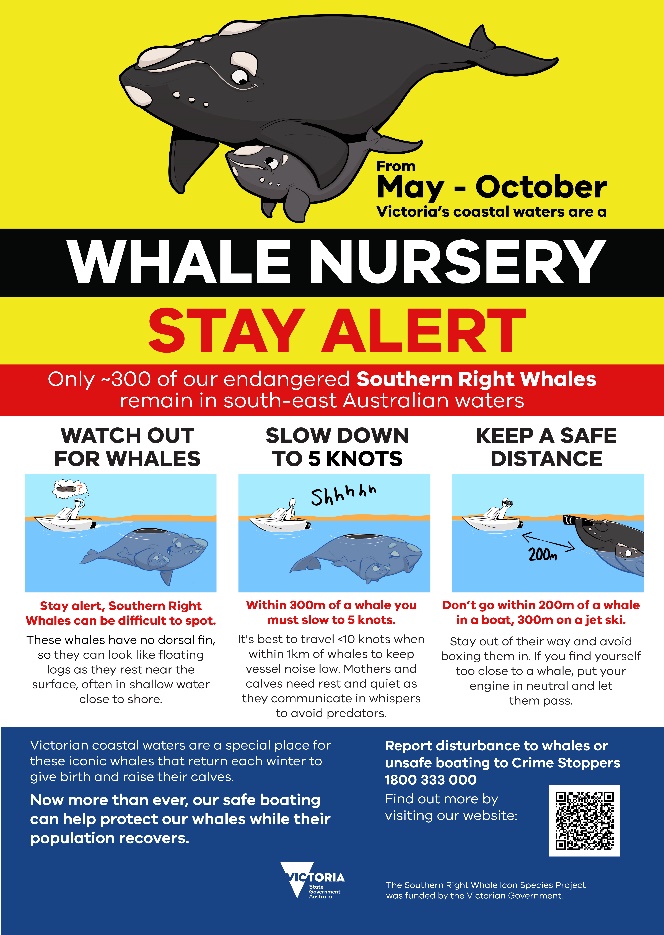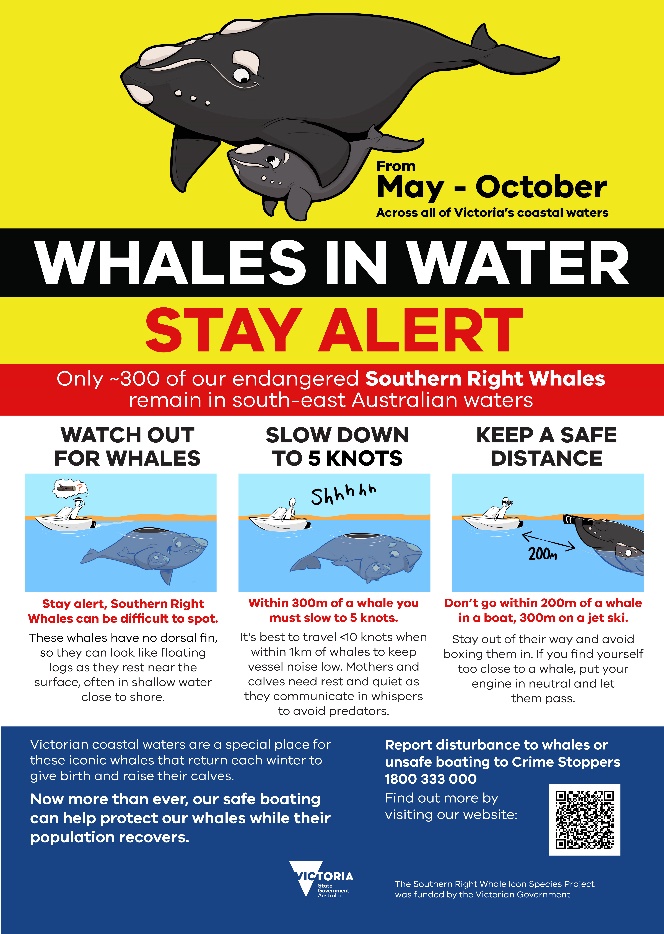Whale News - May 2023
Looking forward to another great season!
We can’t wait for the 2023 whale season to officially begin as we eagerly anticipate the arrival of some old (and hopefully new) faces to our coast. We haven’t received any sightings yet, but hopefully any day now!
Citizen science is an important piece of our Southern Right Whale research program and the data we receive through WhaleFace are proving valuable. Your sightings are collecting information on coastal movements and habitat usage patterns that complement our core coastal monitoring work. These data help support decisions around important areas that may need extra protection.
As an example, the data that you have contributed are providing crucial evidence of cow-calf pairs using areas beyond the Logans Beach area for nursing, resting, and strengthening the calves for their southward journey. As the population struggles to recover (from the effects of commercial whaling) in a changing climate, it is important that we are continually reviewing and adapting our management strategies and your data help us do that.
While the whales have been busy feeding in colder waters, we have been busy in the office working on manuscripts, reports and planning for this season. Look out for further editions of the 2023 Whale News when we will share with you our technical report on supporting the recovery of Southern Right Whales in South- eastern Australia.
A familiar face (and belly) to look out for


Two-two (AKA fang) last calved in 2018 could be one of the breeding females to return this year.
Be a WhaleFace Champion!
Help us spread the word by being champions for WhaleFace, tell your friends and colleagues to join up to WhaleFace and/or Subscribe to our Whale News . Remember you can catch up on any past issues of Whale News by logging in and going to the Whale News tab.
How we are continuing to support the recovery of Southern Right Whales in Eastern Australia in 2023
We are excited to be expanding our conservation and research efforts next year through the Victorian Government’s Icon Species funding program.
Boat Ramp Signs
Keep an eye out for some new signs at boat ramps across Victoria this whale season.
The new signage highlights three simple steps every Victorian boater can do to protect our whales:
WATCH OUT FOR WHALES - Stay alert, as Southern Right Whales can be difficult to spot. These whales have no dorsal fin, so they can look like floating logs as they rest near the surface, often in shallow water close to shore.
SLOW DOWN TO 5 KNOTS - Within 300m of a whale, you must slow to 5 knots. It's best to travel at less than 10 knots when within 1km of whales to keep vessel noise low. Mothers and calves need rest and quiet as they communicate in whispers to avoid predators.
KEEP A SAFE DISTANCE - Don't go within 200m of a whale in a boat, 300m on a jet ski (legal requirement). Stay out of their way and avoid boxing them in. If you find yourself too close to a whale, put your engine in neutral and let them pass.
This information highlights that we should think about all of Victoria’s waters as a whale nursery. Whilst Logans Beach remains the most regularly coastal area, research is showing that cow-calf pairs can be found in any part of the coast, even very young calves have been seen travelling with their mothers outside of Logans Beach.


note to avoid confusion with the Logans Beach exclusion zone the sign on the right will be at the Warrnambool boat ramp.
Improving WhaleFace
The Victorian Government’s Icon Species funding continues to support all the Citizen Science work that we do including the day to day running of WhaleFace, management of data and platform upgrades.
WhaleFace upgrade
We are working on some system upgrades to make the data management process more efficient. Most changes will not affect the general user, but this season we are introducing an additional data field to capture information on Whale behaviour (i.e., Resting, Socialising, Travelling, Feeding, Not Sure). As part of upgrades, we are merging any duplicate accounts and you will no longer be able to set up more than one account with the same email address (you will receive notification if this affects you). If you have any issues logging in or resetting your passwords, please get in touch with me directly Kasey.stamation@delwp.vic.gov.au or with tech support cerdi.support@federation.edu.au
Have your say
We know that being involved in Citizen Science programs can have far reaching benefits, not just for the focus species, but to the wellbeing of participants as well. We would like to track WhaleFace’s progress towards providing a meaningful, rewarding, and educational experience for our community. We will be sending out an online survey to all WhaleFace users shortly so you can tell us about your experience with WhaleFace so far and provide us feedback on how we can make it even better. So please keep an eye in your inbox for this in the coming weeks.
Research
Drone flights
This year we are partnering with Deakin University for our seventh season of drone photography. The drone research is focused on capturing high resolution imagery of cow-calf pairs throughout the season. These photos will play an important role in individual photo identification of the calves. Calf callosities take time to develop, high-resolution imagery increases our chances of cataloguing the calves and re-identifying them as adults. Drone images will also be used for deriving body measurements and body condition scores. This information will allow us to conduct health assessments and track the body condition of cow/calf pairs over time.
Fixed-wing surveys
This year we are excited to be expanding our research program to include fixed-wing flights of the entire Victorian coast. Ian Westhorpe will continue to be our lead aerial observer, but this season he will be volunteering his services through the Arthur Rylah institute. Ian is an expert in Southern Right Whale aerial survey, photography methodology and aircraft safety. In the past, Ian has also conducted a number of SRW aerial surveys along the South Australian, Western Australian, New South Wales and Tasmanian coastlines. His aerial survey experience also includes other species such as Blue whales off Victoria and Sperm Whales near the continental shelf off Albany Western Australia. We are aiming to do four full coastal flights (spread out over the season) to get a better understanding of whale distribution and to help identify any new nursery areas (especially in hard to access areas where data is lacking). This component of our research will be part funded by the Victorian Icon Species fund and part funded by industry (ConocoPhillips; funding the fixed-wing flights). As with all our sighting data, any data we collect during our fixed-wing flights will be publicly available via the Victorian Biodiversity Atlas (VBA). Collecting data from systematic and rigorous scientific surveys across the whole of Victorian coast will fill crucial knowledge gaps and help inform management decisions.
Wishing everyone an enjoyable 2023 Whale Season and can’t wait to see the sightings coming in!
Kasey
.png)


